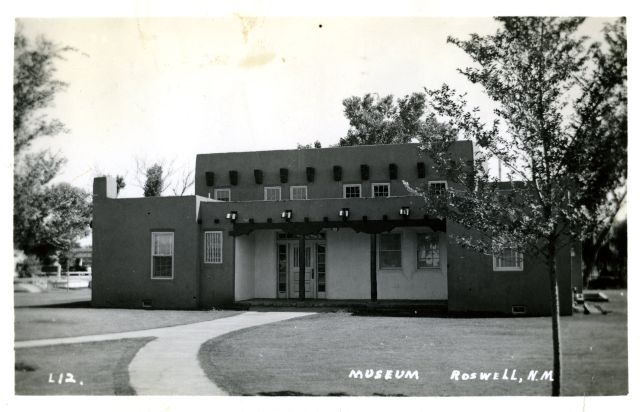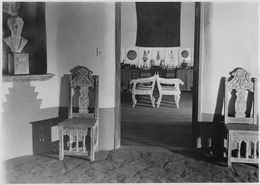Last week, I told you about the paper I wrote for Ethnic Modernism, which took a deep dive at one of the exhibitions shown at the Roswell Museum. Today, I’ll talk about the essay I wrote for my Independent Study. Whereas my Ethnic Modernism project performed a close reading of the documents pertaining to one show, this project took a broader look at the Roswell Museum’s programming initiative.
This paper focused on an ongoing conflict between the Roswell Museum’s federal personnel and its local sponsors at the Chaves County Archaeological and Historical Society. Although the museum successfully completed numerous exhibitions, classes, and special programs, the FAP and the A&H Society could never quite agree on focus. While the FAP wanted to concentrate on art education and appreciation, the A&H Society was more interested in promoting local history. Eventually, the museum would part ways from both the FAP and the A&H Society, forging its own path based in both collections management and public education, but throughout the WPA period, the debate was ongoing.

I explored this conflict through the lens of the FAP’s educational focus. Influenced by the writings of Progressive-era educators and philosophers such as John Cotton Dana and John Dewey, FAP administrators advocated for more classes, demonstrations, and other participatory forms of education. They often criticized museums, arguing that their focus on collections management limited their abilities as educational facilities.
Yet as the conflict in Roswell indicates, not everyone involved in museums considered their role as a collections repository incompatible with public education. While the FAP criticized the A&H Society for a lack of interest in hosting studio classes and a preference for permanent displays rather than rotating exhibitions, the Roswell Museum’s local sponsors regularly hosted lectures, talks, and other events, indicating their interest in public education even as they disregarded federal models.
Focusing on the dialogue between museums and public education during the interwar period allowed me to contextualize my work on the Roswell Museum with some of the readings I’d done in the Independent Study. The texts that I focused on the most included Victoria Grieve’s The Federal Art Project and the Creation of Middlebrow Culture, Neil Harris’ Cultural Excursions, and Lauren Kroiz’s Cultivating Citizens: The Regional Work of Art in the New Deal Era. Basically, I argued that the role of museums in public education was complicated and that their wholesale dismissal as outdated and unable to meet the educational needs of modern audiences is overly simplistic. In the case of the Roswell Museum, the A&H Society and FAP did collaborate even as they disagreed with each one another, and both shared an interest in public education even if it manifested in different ways or topics. The A&H Society consistently held lectures on history, for instance, so even if it didn’t agree with the FAP’s approach, it didn’t disregard education altogether.

I don’t consider this a finished project per se as I do a preliminary exploration of what I intend to become a major theme in my dissertation: the reception of art center exhibition and educational programs. It’s one thing to read what the FAP had in mind with the art centers, but as Roswell demonstrates, federal programming was interpreted differently among the individual centers, with varying results. Moving forward, the tension between local and national interests is a topic I’d like to continue analyzing, with the final dissertation combining the microhistories of specific regions and places with a more national narrative on the Community Art Center Project itself.


